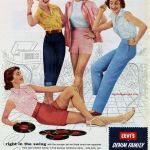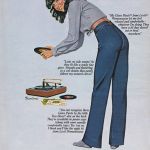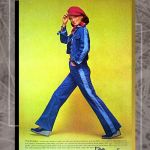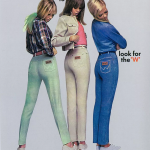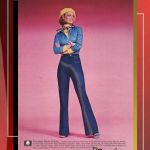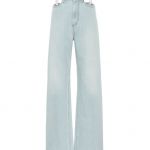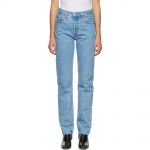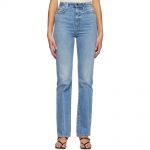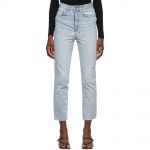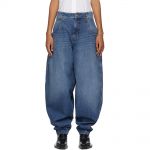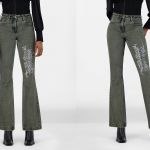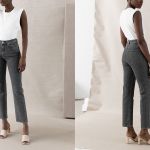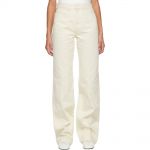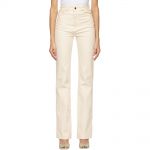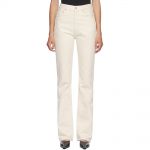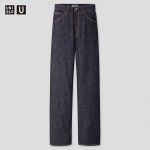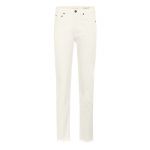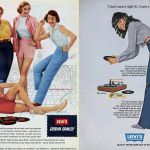
History and evolution of denim
From the origins by Levi's to the sustainable future according to Uniqlo

October 1st, 2020
“My biggest regret is that I didn't invent blue jeans; it's the most spectacular, practical and casual piece of clothing that ever existed. They enclose personality, sex appeal and simplicity”, declared Yves Saint Laurent.
In fact, thanks to their versatility and durability, jeans are a staple of fashion and a real pillar of every wardrobe. This leader, who began his career in the mid-1800s against the pioneers of America, today challenges any nonconformist, pauperism and minimalist rhetoric. Around 60 pairs are sold every second worldwide, for a total of 450 million annual sales. But what has transformed simple trousers into a real style icon?
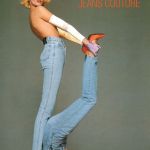
The origins of the name
Although the terms "jeans" and "denim" are synonymous today, they have different etymological roots. For example, jeans derive from "Gênes", a term used by the French to indicate the port of Genoa from which loads of this fabric, characterized by blue moleskin weaves, were very popular with sailors and a good part of the English market. The competitor in the production of this fabric was the city of Nîmes, a municipality located in the south of France which, to differentiate its product from the Italian one and claim its membership, referred to the garment as "De Nîmes", thus coining the term denim.
But the etymological difference is not the only one to distance these two expressions. In the past, in fact, even in terms of composition, jeans and denim had a different weave and a different sartorial mechanism. Over the years, however, the two fabrics merged their destinies by incorporating the details of each other thus cancelling out their differences to inevitably merge into a single term of common meaning.
The history of jeans
Jeans are a perfect example of the realization of the so-called American dream, saturated with creativity and innovation. It all started with the collaboration between Jacob Davis, a Latvian welder and tailor, and Levi Strauss, a supplier of fabrics and textile entrepreneur of Bavarian origins.
Davis, following the request of a customer to reinforce the tension points placed on the pockets of his pants, had the idea of inserting and fixing copper rivets in the jeans that would allow greater resistance to tearing and wear. To patent the idea, however, it took $ 68 which Davis, unfortunately, did not have. The tailor then decided to ask the wealthiest businessman in the country, Strauss, precisely, to finance the project. The latter accepted and on 20/05/1873 Davis and Strauss obtained the license to register the denim trousers that would become the icon of the centuries to come, the Levi's. The production began worldwide in 1886 and in 1890 the most famous model of the brand was born, the Levi's 501, a number that referred to the batch of new pants produced monthly.
The Levi's had now become the iconic uniform of the rebellious youth of the time, an emblem of globalization that characterized a real fashion status where the rappers wore only loose-fitting jeans with a low crotch while the rockers opted for super-tight low-rise jeans; only time will make them worthy of the world monopoly in the denim trousers market and beyond.
Sustainability and upcycling
”Jeans age by integrating the change of eras, imbuing themselves with the adventures, with the life of the owner. Each wash is a turned page, time writes its memory on an ever paler background", declared the American writer Daniel Friedman.
The circular and sustainable practice of upcycling, a creative process through which used garments are recycled and put back on the market, increasingly seduces consumers and the same fashion houses that benefit from not having to draw on new resources to make their marketable clothing again. A passion that is constantly renewed is that of vintage denim, in fact, the most "recycled" garment of all time turns out to be our dear and faithful pair of jeans.
The most troubling parenthesis in the production area is that to produce the cotton necessary for a single pair of jeans requires the use of 6800 litres of water, an operation which, unfortunately, leaves a strong negative impact on the environment. The challenge of each manufacturer has, therefore, become that of minimizing water consumption and reducing the manpower needed to produce the garments. That's why over time innovative methods have been tested that limit the environmental impact. For example, Levi's produced its famous Levi's 511 models by recycling 5 t-shirts, thus saving 98% of water; Lee instead saved nearly a billion litres of water in just 2 years; Wrangler, on the other hand, aims to save 5.5 billion by 2021, using different washing techniques. Converse, for example, with its "Converse Renew" campaign, a project based on sustainable creativity, has created the "Converse Renew Denim Chuck 70", which has seen the famous silhouette of the shoe made entirely with recycled denim.

Curiosity
The 3 diagonal protagonists of twill (oblique stitching method of the threads in the making of jeans) have been diversified over time by the 3 major brands in the sector: the twill on the right is typical of Levi's, the twill on the left characterizes the Lee brand, while Wrangler is characterized by the use of the broken zig zag.
Only in 1905 was the second rear pocket added, making the Jeans the most famous 5-pocket garment in the world. While belt loops appeared only in 1922.
In 1926 the zip, considered more practical, replaces the buttons. In trousers intended for women, the zip closure was inserted laterally, then in the 1960s the right to use unisex jeans with a front zip for both sexes was claimed. Needless to say, this was only the beginning of new femininity, which saw the use of jeans also by a female audience.
Do you know why our jeans fade with every wash? The dye used in the colouring of denim is indigo, a shade with chemical properties that allow the adhesion of the colour only to the surface of the fabric which consequently fades over the years and the armour loses strength and resistance.
Levi's famous red tag was added to distinguish the jeans of the brand mentioned above from Lee's, which at first glance were very similar. The idea was born when James Dean wore a pair of Lee-branded jeans in one of his films, which everyone exchanged for Levi's following the actor's preference for the latter brand.
The so-called "baggy" jeans originate from denim prison uniforms worn by XXL prisoners.
Have you ever wondered what the front pocket is for? Well, this detail initially dedicated to the pocket watch, over time became an excellent hiding place used by Far-West cowboys to hide their gold nuggets.
Levi’s Strauss has never worn a pair of jeans despite having patented them since in the past this item of clothing was intended for the poorest sections of the population coming from the rural areas of the country.
nss G-Club shopping tips
Basic denim is transformed and with its great allure, it becomes an eclectic protagonist of a new luxury. In fact, jeans are available in many alternatives, so it is essential to select the pair that best suits your aesthetic. The fashion mechanism is as fast in incorporating elements as it is in expelling them, but for denim, it seems to have made an exception.
The most common types of jeans are the skinny, enveloping and super sexy that embrace the body all the way down to the leg, cigarette-shaped ones, narrow but slightly cut above the ankle, the boot-shaped ones, perfect to wear with boots, because they are tight around the thighs and slightly wider towards the base of the leg, and finally the so-called boy-friend jeans, characterized by the soft and wide fit, for the high waist, often very low crotch and flared leg.
If you are looking for a perfect pair of jeans, then here is the shopping guide for you, by nss G-Club.























.webp)


































